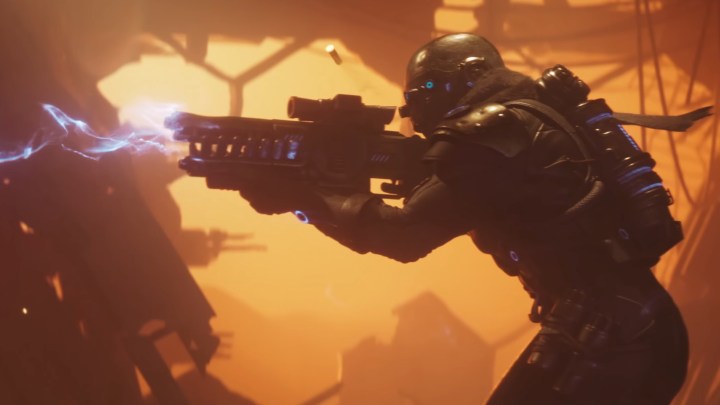
With Starfield, Xbox’s grip on Western RPGs has only just begun. Games like Avowed and Clockwork Revolution are courting the markets for fantasy and steampunk RPGs, but another first-party sci-fi RPG is on the horizon: The Outer Worlds 2.
Obsidian Entertainment’s smaller-scale sci-fi RPG made quite the splash when it was released in 2019, thanks to its excellent writing and the developer’s uncompromised faith in the game’s vision. Xbox Game Studios announced this follow-up in 2021 with a reveal trailer poking fun at sci-fi and game reveal tropes. We don’t know much about this upcoming game as Microsoft and Obsidian’s more immediate focus is on Avowed, but the game’s existence has come back to my attention following the release of Starfield.
Starfield, Bethesda’s long-awaited space RPG, finally saw a wide release earlier this week. It’s a wildly ambitious game that reminded me of what makes Bethesda RPGs, something we haven’t gotten in a long time, so special. That said, Starfield is also a flawed game, sometimes buckling under the weight of its own ambition. Now that I’ve beaten Starfield, my attention has turned back to The Outer Worlds 2, which I hope will double down on its unique identity and not feel the need to match Starfield’s scale or ambition.
Bigger isn’t always better
While Microsoft acquired Obsidian during The Outer Worlds’ development, it still felt like an AA game and was even published by a smaller-scale publisher, Private Division. You could see those limits while playing the game, as there were only a couple of planets that players could only explore certain parts of. Compared to a game like Starfield, that may seem quaint, but The Outer Worlds went for quality over quantity.

Every location I visited during the game felt uniquely handcrafted, as did all the quests I completed and characters I met along the way, some of which I stumbled upon myself. The Outer Worlds is also a game where player choice and agency truly feels influential as characters and the direction of certain quests react clearly to players’ action. Most important characters can be killed, and there are plenty of tough fork-in-the-road decisions to make during the journey.
Its budget showed in terms of things like character animation and the scale of the areas players visit, but sometimes having strict parameters to make a game under can maximize creativity and quality. That can be seen with Starfield, which occasionally struggles to maintain a high level of quality across its wide breadth of features.
Bethesda’s still at the top of its game when it comes to the more traditional RPG aspects, though. I enjoyed its character writing and a narrative concerned with exploring humanity’s hubris and how its desire for constant growth and expansion comes at the cost of sustainability. Ironically, the problems with Starfield’s scale unintentionally echo that theme, as Starfield sacrifices variety for scope, with many planets being somewhat barren and uninteresting to explore despite exploration being a promised gameplay hook.

While Starfield has its shortcomings, the game’s ambition will likely influence future RPGs, especially Xbox-exclusive ones. As such, I wondered if I wanted The Outer Worlds 2 to chase Starfield’s scale as another massive AAA RPG with Microsoft’s backing. The more I played Starfield, though, the more I could affirm that I don’t want that to happen. Namely, I hope The Outer Worlds 2 stays smaller in scope, mainly using the backing of Microsoft to polish off the original’s rough edges rather than expand the original’s content and problems exponentially.
The ambition with sequels is to often go bigger and bolder, and Obsidian has teased the sequel will contain a whole new solar system to explore. I don’t want its scale to go much bigger than that, though. I’d rather have two or three planets that are impeccably detailed and filled with entertaining, reactive content rather than a game that attempts to match Starfield’s attempt to have over 1,000 planets and makes each a bit less entertaining to play on as a result.
As I suspected when writing about Starfield and The Outer Worlds last year, it’s now clear that there’s room for both to exist as distinct sci-fi RPG entities under the same company. Obsidian Entertainment shouldn’t feel the need to chase Starfield’s ambition, but The Outer Worlds’ more intimate scope is what makes the series so special. If Obsidian Entertainment does take that approach, The Outer Worlds 2 can maintain its unique identity and feel while circumventing Starfield’s worst aspects.
The Outer Worlds 2 is in development for PC and Xbox Series X/S.
Editors’ Recommendations
Credit: Source link


Comments are closed.